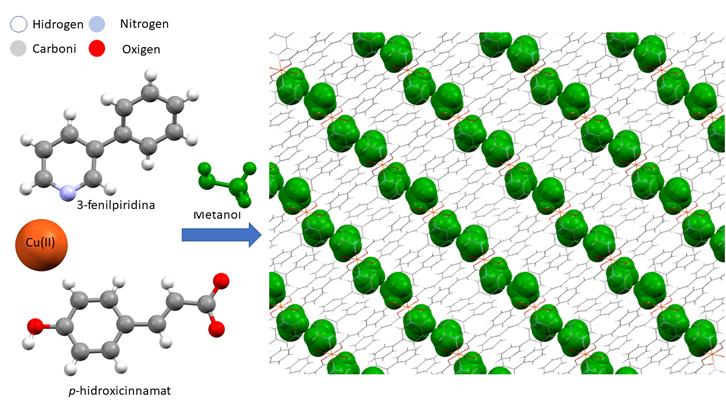Copper(II) compounds and their possible use as porous materials

The world is in need of ever more specialized products for new applications, but these new materials should be environmentally-friendly. In this regard, it is remarkable the interest spurred in functionalized materials, and, among them, those showing porosity have been studied thoroughly during the last decade. In particular: Metal Organic Frameworks (MOFs) and Covalent Organic Frameworks (COFs) have attracted great attention due to the fact that their structure can be tuned in order to meet specific demands.
Recently, a new class of porous materials based on supramolecular structures held by weak interactions such as hydrogen-bonds are now under development. In this field, p-hydroxybenzoic acid is a very promising ligand. In our research group the reactivity of this ligand against Cu(II) has been studied and the formation of supramolecular structures held by hydrogen-bonds, such as 2D polymers, has been observed.
Continuing this study, our group has analyzed and studied a more complicated ligand, p-hydroxycinnamic acid, which is bulkier. In this work, pyridines have been used as auxiliary ligands, aiming to assay its reactivity against Cu(II) and study the formation of compounds with pores or channels. In this work, five new compounds were obtained, showing a great variability in the coordination modes of the ligand and also the formation of 2D-polymers with internal voids. However, most of the times, these voids are occupied by solvents, which hinder its use as porous materials.
Finally, for some of these compounds their magnetic susceptibility has been measured and its magneto-structural correlations studied, showing a complex behavior in some of them.
Inorganic Chemistry Area
Universitat Autònoma de Barcelona
References
Joan Soldevila-Sanmartín, Teresa Calvet, Mercè Font-Bardía, Concepción Domingo, José A. Ayllón and Josefina Pons “Modulating p-hydroxycinnamate behavior as a ditopic linker or photoacid in copper(II) complexes by auxiliary pyridine ligand”, Dalton Trans, 2018, 47, 6479-6493.

